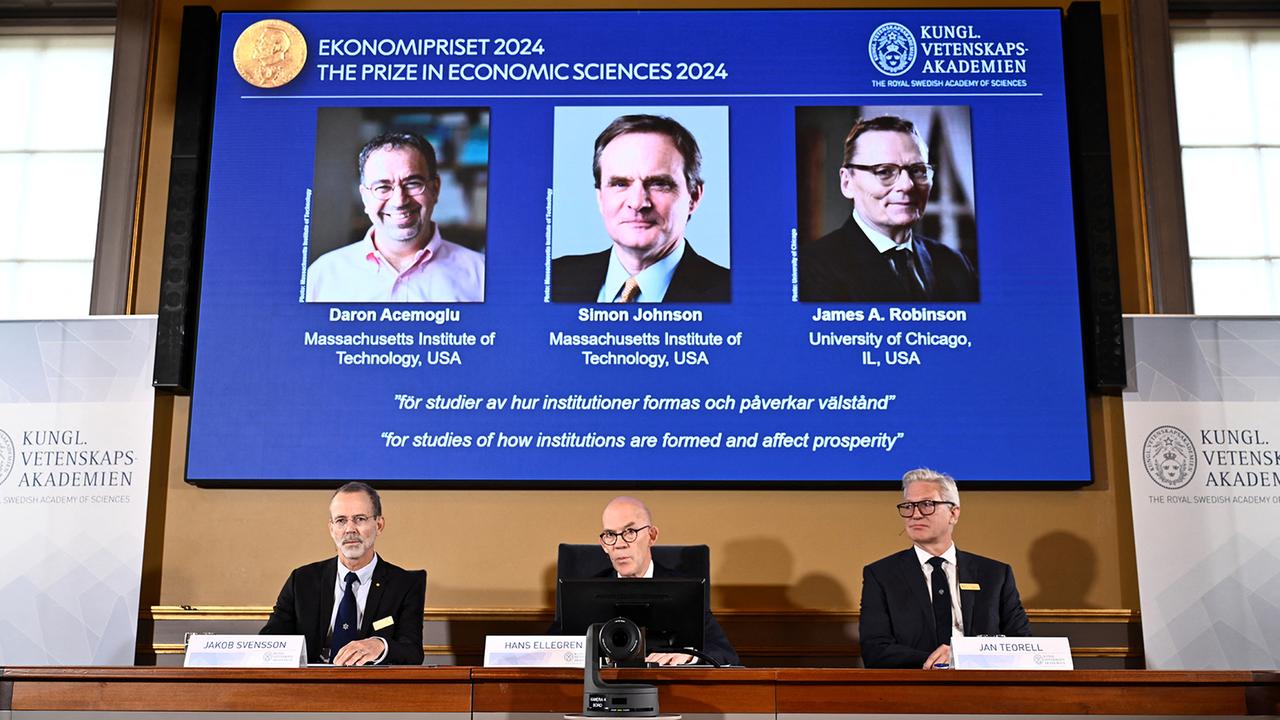- 20 Posts
- 601 Comments
I’m learning a lot about energy in Germany this way. Thanks!
Glad to hear it, by doing some more digging i am learning new things aswell. I actually came across this site (sadly only available in German) by one of our environmental agencies, which i found quite good and mirrors pretty much my opinion (but maybe that is why).
One particularly interesting piece of information is that they give specific numbers for the energy yield per hectare of biomass vs solar. They estimate using corn as an example crop that for biomass it is on average 20MWh/hectare vs 800MWh/hectare for solar, so a difference by a factor of 40x. Further for load balancing renewables they estimate 10% loss for short term storage through batteries and 40% loss when converted to chemical energy sources (presumably hydrogen).
And while biomass currently plays a substantial role particularly in electricity production, they link to studies that long term (2050 being the target date) energy demands can be met completely without biomass useage.
So basically farmers in Germany grow food to make fuel for cars? Like ethanol? Thats an abundance of agricultural lands!
I mentioned E10 fuel earlier, which mixes 10% bioethanol into petrol. Seems like according to wikipedia it is also a thing in Sweden/Finland/Denmark. So that would be an example where plants ultimately get fed into cars. I think this is also a case where demand is induced by some EU directive that requires reduced emissions in the transport sector, and mixing in biofuels was one of the solutions to achieve this goal.
I am not 100% certain on the specifics and i assume that it isn’t a pure play where literally nothing from those plants is used for other purposes. But it’s still fair to say that these crops are primarily planted for extracting energy from them, not for feeding livestock or food. So they are directly competing with those and without this demand farmers would plant different things.
But if I’ve understood correctly from the TEN-T directive, Germany and Switzerland has invested pretty much in H2?
Yeah, seems like we are investing a good amount in clean hydrogen. That includes storage and pipelines. I wasn’t particularly aware of the ten-t directive, but if i undestand it correctly this is about transportation? I think as far as hydrogen goes here in Germany the main focus for that is on use in industrial settings (particularly stuff like chemical processes and steel production). But ofc it’ll also be used in other areas.
but most common is district heating. (I got the name wrong in translation earlier)
Instead of one boiler in every house, there is one boiler per 50-100000 inhabitants or so. Efficiency is great and heat is pipes to where it is used. When it’s cold (-20 or so) those boilers go through tens of semitrucks of wood every day. And as I said, it’s a fairly common set up in parts of Europe, although i understand its not common i Germany.
Not as common, but Munich for example has a large network, which currently is still mostly based around fossil fuels, but they are investing a lot in renewables (particularly geothermal) and plan to get it climate neutral in the longterm while expanding its reach.
Also because of a recent law every municipality has to create a strategy paper for heating (until mid 2026 for larger, 2028 for smaller ones), which includes feasibility studies for district heating. So we might see them become more widespread.

 20·16 hours ago
20·16 hours agoHow is 1€/day cheap for such limited home Internet? I guess it might depend on where you are, but unless you are in the middle of nowhere that seems expensive.
Here in Germany for example, which really isn’t known for its cheap internet, I can find options that offer 100Mbit Flatrates for 20€/month.

 3·18 hours ago
3·18 hours agoAdditional sources: serve the home and TechTechPotato (Dr. Ian Cutress).
This honestly seems like one of the most important recent stories in the whole tech industry. I don’t think it even matters how things eventually get settled for this move by ARM to have lasting consequences. Simply the threat will cause Qualcomm and many others to increase their efforts to explore and adopt alternatives like RISC-V.
China is already invested into moving to RISC-V and Europe also has an interest in it, now you give huge companies like Qualcomm reason to incease their efforts? That is creating exactly the buy in needed to actually make substantial shifts like this happen.
That’s a whole lot of extra steps you added there
I added those steps, because it is exactly what is currently done at least here in Germany and at scale. Although we might need to clarify here if we want to limit the discussion to just wood and heating specifically, or also other plants such as corn/rapeseed that are grown for biomass often converted into gas/biofuels (like with E10 petrol) to make existing technologies use less fossil fuels without need to immediately replace them.
And it is a way better solution than trying to produce electricity to heat your home,
Yes, directly heating with electricity e.g. with infrared heating panels is not the way to go and uses a ton of energy.
But heat pumps are a great piece of technology and pretty popular in nordic countires aswell, aren’t they? With well designed ones having a COP (coefficient of performance) of 3-5. Technically they aren’t creating heat, but moving it, however i think we can ignore this distinction, since both leads to the desired effect of a warm house. Added bonus that depending on the device they might also work for cooling, which will sadly become more relevant.
As for energy storage: Electricity can not practically be stored between seasons
There definitely are ways to store energy, although of course this comes at a price and the conversion steps are associated with energy losses. Besides the obvious batteries (which are improving, but admittedly probably not at a point sufficient enough to fully scale as needed), there are other options. Pumped-storage hydroelectricity is a in my opinion cool solution. You can also convert excess to hydrogen gas and store that.
Obviously a tree standing in the forest is stored great, but between the time to grow and sufficient supply for each season, how much space would we actually need for this solution if it were actually adpoted at scale (enough to replace existing fossile solutions)? Probably hard to estimate, but i’d imagine it would be a lot. And comercial forests like that probably aren’t great for bio diversity either, and not risk free looking at the current health of existing ones and the increase in wildfires.
At least it will not add CO2, unlike the coal that would have been used instead.
That is true for sure. Although being better than coal in regard to climate impact is a low bar.
68 million Europeans heat their home with some kind of central heating system. It not common in west, or central Europe, but it is in the Nordics and in the eastern part.
I’m not certain if i understand what exactly you mean with “central heating system”. Do you just mean having something like a boiler that uses e.g. gas or wood pellets in the basement? If so those are common in Germany aswell. Particularly the gas boilers are something we want to move away from (there was huge outcry when the green party of our government moved to ban new installation of those).
So i guess in the context of our discussion the question would be if the better replacement for those would be a wood pellet burner or something like a heat pump. And at scale my opinion is that the later is the way to go. As stated both because i doubt that wood production could scale that large and air quality is also a factor; see e.g. here. If too many people in dense residential areas would start to use them it could have health impacts. Not that we don’t have those already from ICE cars, but no need to replace those as a source with something else, now that we are finally starting to get rid of them.

 2·2 days ago
2·2 days agoI’m sure if bigger batteries sold better there would be more (any) options. The issue is not enough people care.
This in my opinion is only true to some degree. The real world doesn’t reflect the idealistic demand->supply concept, and instead there are many other factors that play a role. There’s the reverse supply->demand effect aswell, where companies especially through marketing steer consumer demand into the direction that suits them.
The issue is not enough people care.
Here the big issue is that not all qualities are equally easy to experience.
When you go into a store you can immediately see and feel the effect a larger, brighter screen or a thinner device has, the difference in real world battery life for your own specific use case is impossible to quantify. Even more so when asked to extrapolate it into the future and factor in degrading capacities. You can’t even directly translate a concrete number like the mAh size of the battery into it, since hardware/software efficiency and useage patterns can distort it substantially.
You could be right that that this may lead to more biomass demand due to regulations, but honestly i hope it doesn’t. It’s great when done with actual waste, but when done purposely it just seems much less efficient than the solar/wind alternative.
“Growing plants -> carrying them to a biomass facility -> converting it to gas/biofuels -> using those in cars, for heating with gas or conversion to electricity in gas power plants” seems so much less efficient than just “put solar panels/wind turbine on a field -> use the electricity for EVs or heat pumps”. The former has just so many extra conversion steps where energy is lost.
Wood is a great energy store, as well, which we need more of.
Another point that i have somewhat mixed feelings about, but it probably depends on the context.
If we are talking use for energy production e.g. heating with wood chips/biomass, then as mentioned above it is imo only useful when done with waste (the production of which you’d ideally reduce in search for efficiency). If done by purposely growing trees to cut down and completly burn for their stored energy then logically you are at best carbon neutral (you release the CO2 that was stored), but realistically slightly worse because of transport costs and so on. Plus depending on your setup it may lead to air polution, particularly an issue if done in urban settings.
It is however great as carbon storage and to reduce emissions when used as building material to replace something like concrete.

 15·2 days ago
15·2 days agoDa wäre ich mir gar nicht so sicher, das ist ein Kopf an Kopf Rennen mit der Idee das online Textangebot des öffentlichen Rundfunks einzuschränken.

 51·2 days ago
51·2 days agoMan müsste noch nichtmal neue Steuern einführen. Einfach mal anfangen bestehende Schlupflöcher zu schließen und Steuerbetrug konsequent zu verfolgen.
Cum-Cum/Ex steht da natürlich immer im Raum, aber auch Dinge wie dass Vonovia bei der 20mrd Übernahme der Deutschen Wohnen wohl keinen Cent Grunderwerbssteuer zahlen muss, wenn ein Mathias Döpfner über eine mrd an Aktien steuerfrei geschenkt bekommt oder Unternehmen die mit einer Hütte im Wald Steuern umgehen.
Aber es geht halt garnicht darum effizient Geld einzusparen oder Einnahmen zu erhöhen, sondern nur ums Drangsalieren und Ausspielen der ärmeren Bevölkerungsschichten gegeneinander.
How is agricultural land defined if it isn’t used to grow biomass?
I can see how i wasn’t specific enough with my wording. This is what i am talking about. Basically growing plants for the purpose of energy production, rather than e.g. food or material useage.

 20·4 days ago
20·4 days agoThat was my initial thought aswell, but after thinking about it I changed my opinion to preferring the simple majority.
Imo one of the deciding factors is how you think about it. Do you see it as a choice between two conscious actions (acceptance or active rejection), or is only the “yes” vote an active choice and “no” something of a “natural” state?
Also if you set hurdles for change to high, then you are potentially hindering progress and systematically favoring conservatism. Which isn’t always bad, but the status quo and how things were done in the past aren’t always sustainable and worth the advantage.
On the contrary, I’m afraid. Land is in very short supply. The issue is that even if the land is not currently developed it is doing vital stuff already. If it’s used for food production, if it’s a bit of forest storing massive amounts of CO2, if it’s home the insects pollinating our food supply, if it’s…
I won’t claim to be an expert, but I’m gonna push back on this point. Local conditions will ofc always vary, but take Germany for example, which is probably one of the more densely populated countries.
Based on the numbers i can find anywhere from 14%-16% of our agriculturally used land is used to produce biomass. This is significantly less efficient than if even a fraction of this area were used for photvoltaics. And those rapeseed or corn monocultures probably have close to zero value for biodiversity, on the contrary i’d imagine that pesticide use will negatively impact nature overall. With solar panels on the other hand you can still use the underlying land to plant stuff like wild flowers and so on, if you wanted. There are also the already mentioned hybrid uses in agriculture where you plant crops below the panels or just use the land for grazing.
On a side note since you mention forests. Just recently there was a number of articles on how due to their poor condition german forests have actually gone from being carbon sinks to carbon sources, releasing more CO2 than they bind.
One more limiting factor that i forgot to mention above is lack of qualified contractors to actually build solar farms or put panels on roofs. Particularly with residential homes that seems to be another common complaint.

 10·4 days ago
10·4 days agoI wish it would become standard to report these things not as a single number, but as yearly increases paired with the contract duration. That would make it much easier to put them into context, and compare them to other deals or inflation.
Just the number alone without context can also be straight up misleading. I remember that when train personel went on strike here in Germany, I saw some articles comparing the demand and offer by just mentioning that single number, and they seemed fairly close. Well, one was over 2 and the other over 3 years, making them massively different in practice.
As always with these fancy ideas it is a solution for something that is not a problem: We aren’t even close to running out of suitable space to put solar panels. The problems for solar are usually just willingness, bureaucracy, or the electrical grid not being able to handle the additional load.
We’ve also had proposals for solar bricks for paving roads/parking lots, putting the panels as dividers between highway roads. It just doesn’t make sense to overcomplicate things.
Come back once every single parking lot, large roof, unused radom patch of land, or even agricultural land (there are some interesting setups where the shade provided by solar panels is actually beneficial for the plants) is fully utilized. But chances are that at that point we already have more than enough capacity.
 1·5 days ago
1·5 days agoDer Schritt zur Vollbanklizenz ist denke ich nur logisch und wie der Artikel erwähnt sehen das auch die anderen Neobroker so. Letztlich kann man nur so als Komplettlösung für die finanziellen Bedürfnisse moderat informierter Kunden auftreten, die letztlich denke ich die Hauptzielgruppe sind. Im Kontrast zu den beiden Extrema: Altkunden z.B. der Sparkassen, die trotz hoher Gebühren letztlich nie wechseln werden, oder finanziell sehr engagierte Kunden, die bis ins Detail optimieren, wodurch der All-in-One Aspekt an Bedeutung verliert.
Bei den inzwischen wieder fallenden Zinsen haben sie aber denke ich anders als Trade Republik den besten Zeitpunkt verpasst.
Was mir persönlich bis jetzt auf dem Markt fehlt und was erst mit einer Banklizenz möglich ist, wär die Möglichkeit die Vermögensallokation zu automatisieren. Sobald man Konto mit Gehaltseingang, Tagessgeld und Depot unter einem Dach hat könnte man diverse Regeln aufstellen. Zum Beispiel: Am Ende des Monats verschiebe alles bis auf X€ vom regulären Konto auf das Tagesgeld (oder Geldmarktfond) bis eine Höhe von X€ erreicht ist, die als Notgroschen dient. Alles was darüber hinausgeht lege entweder automatisch zur nächsten Sparplanausführung an (auch hier könnte man gewisse Verhältnisse wie 70/30 automatisieren) oder es wird auf extra Unterkonten für spezielle Sparziele verschoben.
Die bestrebungen Market Maker zu werden finde ich sehr viel interessanter, tue mir aber schwer die Konsequenzen für uns Kunden mit meinem limitierten Laienwissen einzuordnen. Die Verbindung mit dem Verbot von PFOF war auch für mich relativ offensichtlich, aber ich kann z.B. nicht einschätzen ob wir als Kleinanleger letztendlich besser darstehen in einer Situation mit PFOF oder ohne, aber dafür mit Depotanbieter=Market Maker.
Davon abgesehen stellt sich mir die Frage, ob hier dann ähnlich wie bei der Bankenlizenz alle Konkurrenten versuchen werden Market Maker aufzubauen. Könnte das überhaupt so funktionieren oder gibt es nur für eine geringere Anzahl an Market Makern im Vergleich zu Banken/Depotanbietern Platz?

 15·6 days ago
15·6 days agoThe concept you are describing is called Innovator’s Dilemma and imo the most recent example for it happening is with legacy car manufacturers missing the ev transition, because it would eat into their margins from ICE. But i am not sure if this is a good example for it.
However imo it seems like a great example for what Steve Jobs describes in this video about the failure of Xerox. Namely that in a monopoly position marketing people drive product people out of the decision making forums. Which seems exactly the case here where the concerns of an engineer were overruled by the higher ups, because it didn’t fit within their product segmentation.

 1·9 days ago
1·9 days agoWer will der kanns ja gerne machen.
Finde ich tatsächlich vielleicht einen wichtigsten Punkte, denn das ist ja derzeit genau nicht der Fall. Soweit ich es verstehe ist es derzeit generell nicht möglich, selbst wenn potentielle Spender dazu bereit wären.
Wenns dann Opt-out wird, aber erstmal nur für Hirntod. Ist glaube ich die beste Lösung für alle
Da hast du denke ich recht. Ein gleichzeitiges Einführen wäre wohl zuviel Änderung auf einmal und würde eventuell bei vielen erstmal zu einer reflexhaften Ablehnungshaltung führen.
Da wir ja seit relativ kurzer Zeit das Organspende-Register haben könnte man es dort als Option bereitstellen. Genauso wie es ja bereits jetzt die Möglichkeit gibt Einschränkungen festzulegen welche Organe (nicht) gespendet werden sollen.

 3·10 days ago
3·10 days agoI am not sure how up to date and accurate this Wikipedia article, but that seems like another substantial step. Looking at the list I am quite surprised by the speed the size of these wind turbines seems to progress.
Can someone more knowledgeable answer me a few questions:
How likely is it that China takes over this industry world wide similar to solar? Specifically what role does (if at all) play logistics in this. Those turbines are massive compared to easily shippable solar panels. So I imagine they’d be much harder to transport and local production could have some advantages, but how much does that matter?
It does seem like all the new largest turbines in prototype phase are from China, but when you scroll to commercially deployed the western manufacturers show up more. Is this just due to different timings in their development cycles or have they dropped out of/can’t keep up with development for larger turbines?

 3·10 days ago
3·10 days agoHabe dazu hier in [email protected] einen Artikel gepostet

 22·10 days ago
22·10 days agoMost will probably use USB-C and it’s just a good law in general. But I think one reason to adopt it instead of just assuming that it will happen anyways is that if they don’t, they might end up being the dumping ground for whenever someone has a product that uses an older connector like micro USB simply because they are that tiny bit cheaper or just excess inventory.















I definitely agree that it is part of a negotiation process for ARM, but do you think there’s a scenario where they settle and things go back to normal without changes? Seems like they are betting on being irreplaceable and want to
I don’t have the technical knowledge to judge how hard it is to switch ISAs, but since Qualcomm with the Nuvia team seems to have managed to create a new core from the ground up that rivals or exceeds ARMs offerings, it presumable is a solveable problem.
The root issue to me seems that while they have a vendor/customer relationship they are essentially also competitors in the design market. Ideally you’d want clear seperations and aligned goals like you have e.g. on the manufacturing side between ASLM, TSMC and chip designers like Apple/Qualcomm. No one can squeeze out too much profit from the others, because they are dependent on each other making progress. With ARM/Qualcomm you don’t have that, since ARM probably wishes Qualcomm would just go back to using their reference designs instead of doing their own.